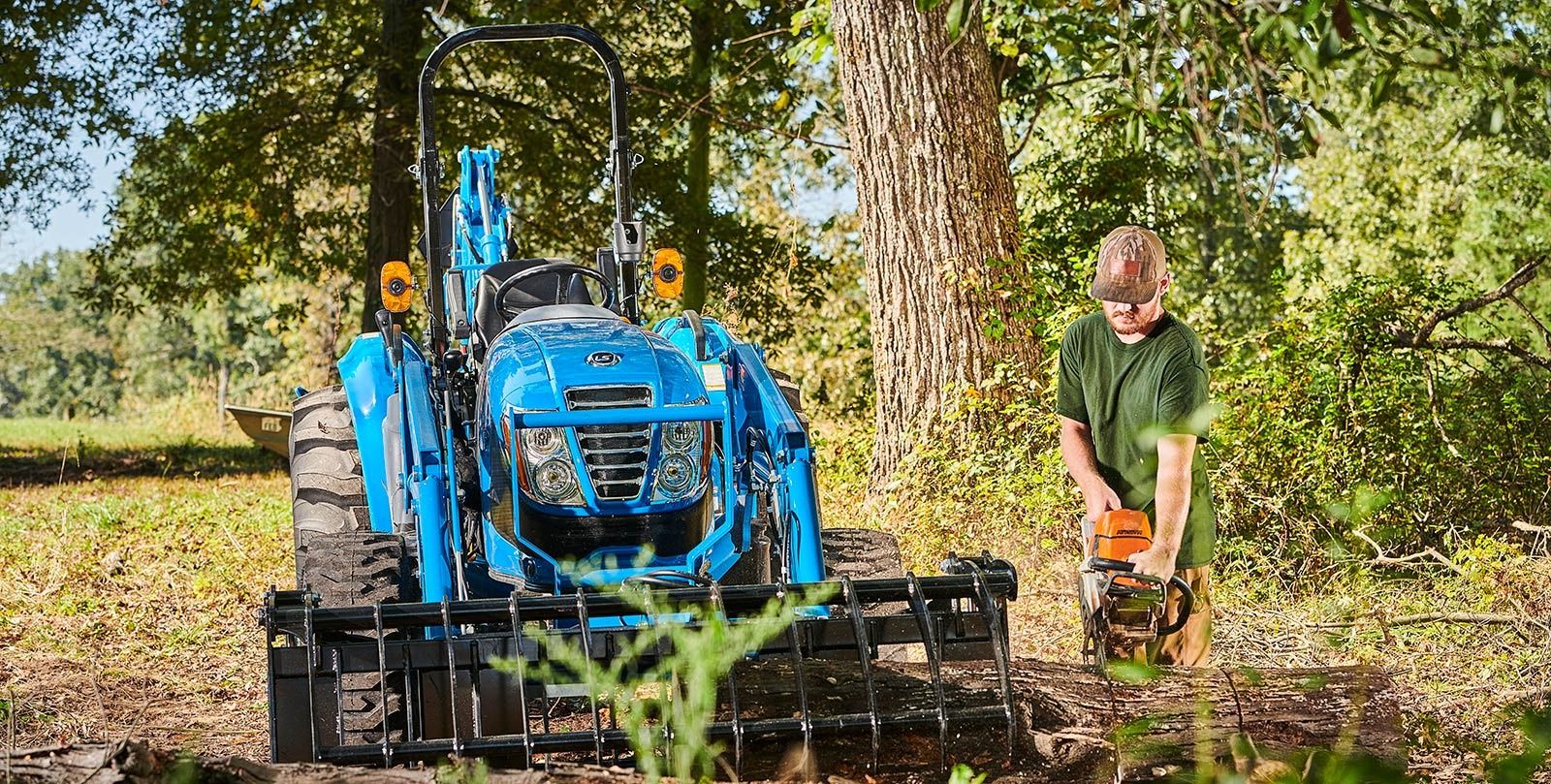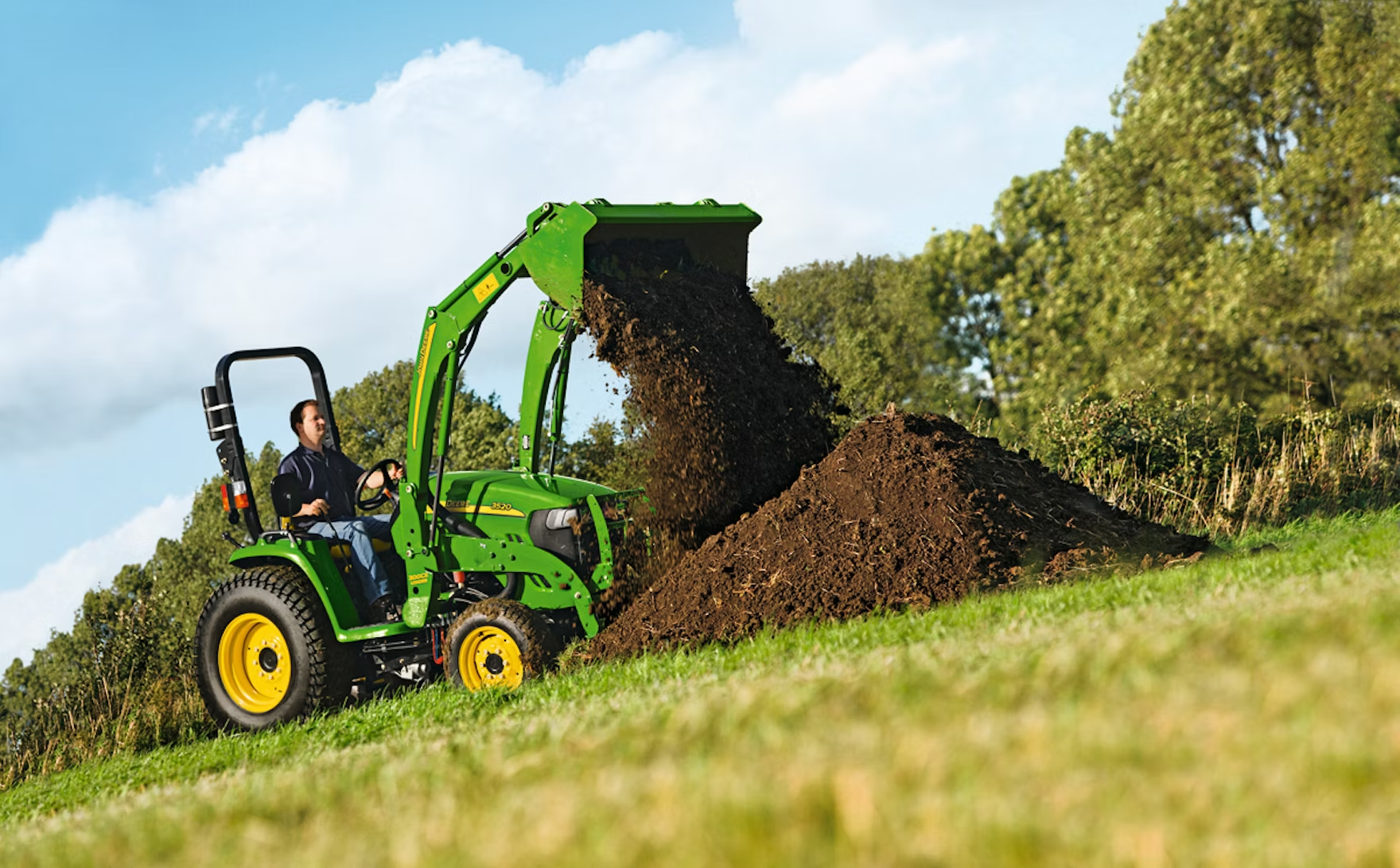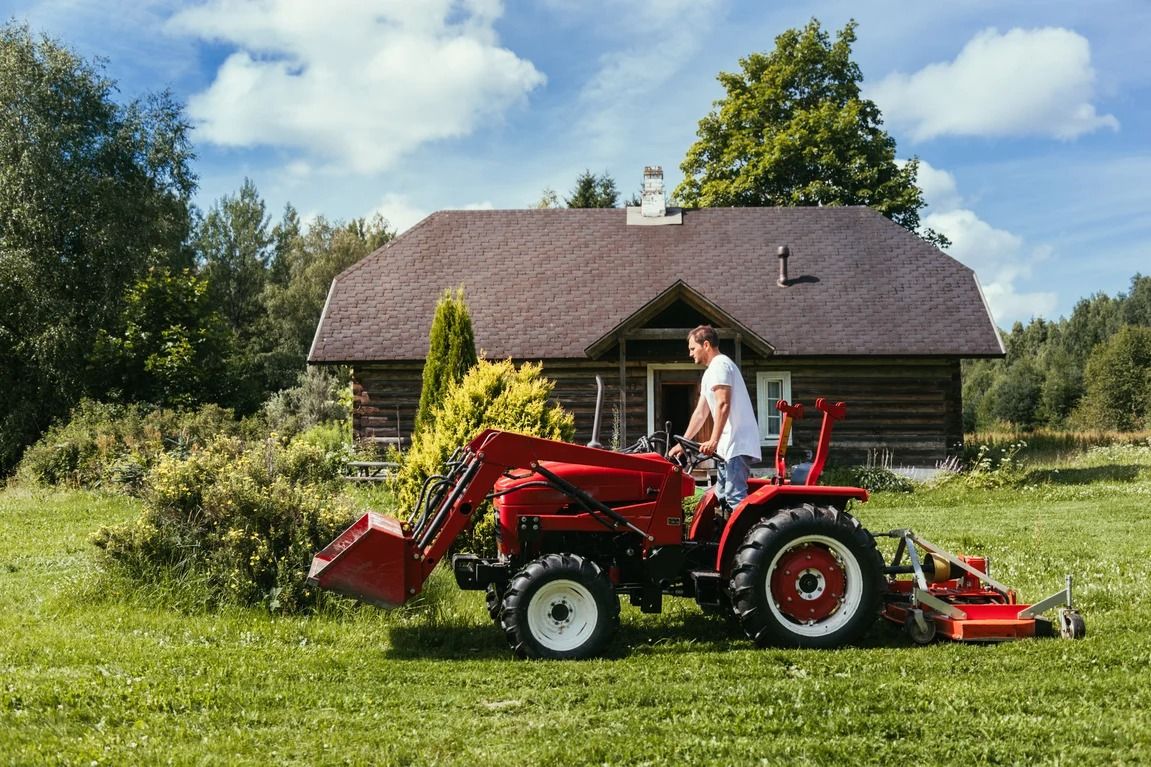Find the Right Tractor for Your Land — Without Guesswork or Sales Pressure
Choosing the Right Tractor Doesn’t Have to Be Hard
Standing in front of rows of tractors? It’s overwhelming. Every machine looks tough. Every dealer says it’s “the one.”
But here’s the truth: the right tractor depends on your land, not just the label on the hood.
This simple guide walks you through what actually matters:
- What size tractor works best for your land
- Which attachments you’ll actually use
- What to know about horsepower, PTO, tires, and transmissions
- And how to not get burned on price
If you're a first-time buyer, small acreage owner, or just tired of guessing—this is for you.No confusing lingo. No upsells. Just real advice you can trust.
Let’s get you a machine that works as hard as you do.
Match Your Tractor to Your Land and Tasks
Not all land is the same—and neither are tractors. The kind of work you do and how much land you have should guide your decision more than any brand name or horsepower number.
Let’s break it down by acreage and task type:
- For 1–5 Acres
- Best Choice: Subcompact or small compact tractors (20–25 HP)
- Use Case: Mowing, light grading, pulling a cart, basic loader work
- Good Fit For: Homeowners with flat terrain, gardens, or pasture trimming
Real-World Example: A 2-acre residential property with a gravel driveway and fruit trees might do well with a Massey Ferguson GC1725M and a rotary cutter.
- For 5–15 Acres
- Best Choice: Compact tractors (25–45 HP)
- Use Case: Mowing, fence post installation, spreading gravel, brush clearing
- Good Fit For: Hobby farms, food plots, or mixed-use land
Example: On a 10-acre property in Livingston with pasture and woods, a 35 HP compact 4WD with loader and box blade covers most tasks easily.
- For 15+ Acres
- Best Choice: Utility tractors (50–100+ HP)
- Use Case: Field work, moving round bales, tilling, grading driveways
- Good Fit For: Working farms, contractors, or landowners with livestock or large implements
Tip: Prioritize lift capacity, transmission type, and compatibility with heavy-duty implements.
Quick Tips:
- Hilly or muddy land? Get 4WD.
- Sandy or soft ground? Go with wider tires or add ballast.
- Dense trees or tight turns? Check your turning radius and overall width.
Still unsure?
Contact usSubcompact, Compact & Utility — Know the Difference
Acreage isn't the only thing that matters. Choosing the right tractor starts with knowing what size class you’re actually dealing with. Here’s how they break down — and what each is built to do.
Subcompact Tractors (20–25 HP)
- Ideal for properties under 5 acres
- Tight turning radius and easy to store in garages
- Handles mowing, small grading jobs, light loader work
- Often comes with mid-mount mower decks and front-end loaders
Good fit for: Gardeners, rural homeowners, and anyone doing mostly light work.
Compact Tractors (25–50 HP)
- Built for small to mid-size acreages
- Handles heavier attachments like tillers, post hole diggers, box blades
- Available in gear or hydrostatic transmission
- Strong enough for field prep, brush cutting, light livestock chores
Example: The Massey Ferguson 1835E is a solid all-arounder for 10-acre hobby farms.
Utility Tractors (50+ HP)
- Meant for big jobs and big land
- Lifts heavy round bales, pulls plows, runs large implements
- Often comes with cabs, advanced transmissions, and higher ground clearance
- Needs more storage and a bigger trailer for transport
Best for: Cattle operations, commercial hay work, or rural contractors.
Which One’s Right for You?
Ask yourself
- What’s my weekly workload?
- Will I use multiple attachments?
- Do I need it to last 10+ years?
Most first-time buyers land in the 25–40 HP compact range—a solid mix of power, size, and flexibility.
Want help comparing models?
The Tractor Specs That Actually Matter
Horsepower might catch your eye. But buying a tractor based on that number alone? That’s how people end up with the wrong machine.
Here’s a breakdown of the specs that actually matter — and what they mean in the real world.
Engine Horsepower vs PTO Horsepower
- Engine HP is the total power the tractor produces.
- PTO HP (power take-off) is what gets delivered to implements like a mower or tiller.
- PTO is usually lower than engine HP, but it’s what really matters for working attachments.
Tip: If you’re running a rotary cutter, you want to know the minimum PTO HP required — not just the sticker HP.
Transmission Types
- Hydrostatic: Like an automatic car. Great for beginners and loader work.
- Gear/Manual: More control, better fuel use, often found on utility tractors.
- Power Shuttle: Shift without using the clutch — best for frequent direction changes.
Choose based on comfort and the kind of jobs you’ll do most often.
2WD vs 4WD
- 2WD is fine for flat lawns and light mowing.
- 4WD gives better traction, pulling power, and safety on hills or muddy land. Rule of Thumb: If you ever use a loader, get 4WD.
Lift Capacity
- Front-end loader lift matters more than you think.
- Look for the lift height and weight it can handle at full height.
- Ask if the rated capacity is at the pivot pins or 19 inches forward — it makes a difference.
Tires: R1, R3, or R4?
- R1 (Ag tires): Great traction in mud or soft soil.
- R3 (Turf tires): Gentle on grass, poor grip in wet conditions.
- R4 (Industrial tires): A solid middle ground. Strong, stable, and durable.
Want a side-by-side comparison?
Must-Have Attachments (And Which Ones to Skip)
A tractor is only half the equation. The right attachments turn it into a mower, a digger, a grader, or a trailer hauler. But not every tool is worth your money upfront — especially when you’re just getting started.
Here’s what most landowners actually use (and what ends up collecting dust).
Attachments You’ll Actually Use
1. Front-End Loader (FEL) If your tractor doesn’t come with one, add it. Use it for: hauling dirt, gravel, mulch, firewood, manure Bonus: helps with leveling and spreading too
2. Rotary Cutter (Bush Hog) Essential for mowing tall grass, brush, and light saplings Best for: fields, fence lines, overgrown areas
3. Box Blade Great for leveling driveways, clearing trails, and grading soil Built tough and requires little maintenance
4. Post Hole Digger Perfect for fencing, trees, and signposts Tip: Get a PTO-powered model for deeper, easier digging
5. Land Plane or Grader Blade Helps maintain gravel roads and driveways Easier to use than a box blade for some surfaces
Attachments to Hold Off On
1. Bale Spears Only needed for round bales or hay work — skip it unless you raise livestock
2. Rear Snow Blower Not practical unless you’re in deep-snow states like Vermont or Minnesota
3. Flail Mower Expensive and specialized — rotary cutters do the job for most landowners
4. Specialty Implements Soil pulverizers, rock buckets, or potato plows? Great if you need them — but not for the average property owner.
Pro Tip: If you're buying a new tractor, ask about package deals. You can often get a loader, rotary cutter, and box blade bundled for less than buying separately.
Need help deciding which tools fit your land?
Should You Buy New or Used?
If you’ve never owned a tractor, it’s tempting to buy used and save some cash. But it’s not always the cheaper option in the long run.
Here’s how to think it through.
Buying New
Pros
- Full factory warranty (often 5–10 years on powertrain)
- Clean service history and no hidden issues
- Easier to finance with low or 0% APR
- Can bundle with new implements at a discount
Cons
- Higher upfront cost
- May take longer to deliver if custom-ordered
Best For: Buyers who want peace of mind, plan to use it often, or prefer fixed payments with a warranty.
Buying Used
Pros
- Lower sticker price
- Faster to take home — what you see is what you get
- Ideal for light use or backup machines
Cons
- No warranty, unless it’s certified pre-owned
- Risk of wear and tear: check hydraulics, filters, seals, and tires
- May need immediate service or new fluids
Watch Out For:
- Unclear maintenance records
- Signs of leaks or rust
- DIY electrical fixes or aftermarket wiring
Real Talk: A customer in Baton Rouge picked up a 10-year-old compact tractor for $8,000. Two months later? $2,100 in repairs — and no warranty to cover it.
Sometimes buying new is the better deal.
Not sure which path is right?
Check out our
Test Drive Like a Pro: What to Look For
You wouldn’t buy a truck without driving it. A tractor’s no different. A good test drive will tell you if the machine fits you — not just your land.
Here’s how to make the most of it.
Before You Get on the Seat
- Ask for a cold start — that shows how well the engine really runs
- Check for leaks under the frame or around hydraulic lines
- Look at the tires: dry cracks and uneven wear can mean hidden issues
- Review the hour meter: most tractors rack up wear after 500–800 hours
During the Drive
1. Check Visibility Can you clearly see the loader bucket and hitch point? If not, it’ll frustrate you every job.
2. Test the Loader Lift and lower it slowly, then quickly. Does it move smoothly without jerking or groaning?
3. Try the PTO Ask to hook up a mower or tiller. Engage the PTO. It should spin fast and clean — no clunks, no hesitation.
4. Drive It on a Hill (If Possible) Tractors behave differently on slopes. Listen to the engine. Test the brakes. Feel the balance.
5. Shift the Gears If it’s a gear or shuttle transmission, see how it handles under load. Clunky shifting or grinding? Walk away.
Smart Questions to Ask the Dealer
- What’s included in the first service? (And when is it due?)
- Can I add a cab or hydraulic remotes later?
- How quickly can I get replacement parts?
- Can I try a demo unit with the attachments I’ll actually use?
A real test drive should take 15–30 minutes. Don’t let anyone rush you. If they won’t let you get hands-on — that’s a red flag.
Want help setting up a test drive near you?
Book a demo visitFinal Checklist: Don’t Buy Until You Read This
Before you sign anything, take 3 minutes and run through this checklist. It could save you thousands — and a whole lot of frustration later.
Know Your Land
- Do you know how many acres you're working with?
- Are there hills, mud, trees, or soft soil?
- Do you need to mow, dig, lift, or grade regularly?
Pick the Right Size
- Did you choose a subcompact, compact, or utility based on what you need — not what the dealer pushed?
- Does the tractor have enough PTO horsepower for the attachments you plan to use?
Look at the Specs That Count
- Transmission type: hydrostatic, gear, or shuttle?
- 4WD or 2WD — and does your terrain demand it?
- Loader lift capacity and hydraulic output — will it do the jobs you're buying it for?
Attachments and Implements
- Do you have a plan for the 2–3 implements you’ll use most often?
- Are they compatible with the tractor’s category and PTO setup?
- Did you ask about bundle pricing or package deals?
New or Used?
- Did you check service records if used?
- Is there a warranty? What does it cover — and for how long?
- Will you finance it, or pay cash?
Test Drive Recap
- Did you drive it under load, test the PTO, and lift the loader?
- Did it start cold, brake cleanly, and shift smoothly?
- Did you feel comfortable in the seat, with good visibility and control?
If you checked off most of these — you're on the right track. If not, pause. Ask more questions. Or talk with someone who can walk through it with you.
We help buyers like you every day — and we don’t pressure anyone.
Contact UsTo help readers keep exploring, link naturally within the article and in a “Helpful Links” section:
Want a machine that fits your property? Explore compact tractors built for 5–15 acres.
Ready to Find Your Tractor?
Whether you’re working 3 acres or 300, the right machine makes all the difference. Let’s get you something that fits your land, your workload, and your budget — without the sales pressure.
Explore Tractors In StockTalk With a Tractor Expert



